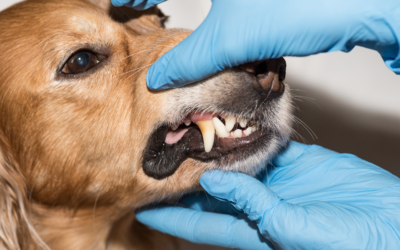Seasonal allergies in pets can make the changes in weather a challenging time for our furry friends. As we welcome the beauty of spring’s bloom or fall’s crisp leaves, our pets might not share the same enthusiasm. Allergens that come with these seasons can cause discomfort, and being vigilant about the signs is crucial for their well-being. This guide delves into recognizing these signs, outlines effective treatment plans, and offers preventive measures to ensure your pet enjoys all seasons with comfort.
Recognizing the Signs of Allergies in Your Pet
When pets have allergies, their immune system reacts excessively to environmental allergens such as pollen, mold, and dust mites, leading to a series of symptoms that can be troubling for both the pet and the owner.
Identifying Seasonal Allergies in Pets
The symptoms can vary but often include:
- Persistent scratching, biting, or licking
- Inflamed, red skin, or hot spots
- Frequent sneezing, coughing, or wheezing
- Discharge from eyes or a runny nose
- Ear infections or head shaking

Recognizing these signs early on can make a significant difference in the comfort and health of your pet.
Seeking Treatment: When to Visit Your Vet
If any of these symptoms persist, it’s time to consult your vet for a proper diagnosis and treatment plan.
Professional Care for Seasonal Allergies
Veterinary care for allergies may include:
- Allergy testing to pinpoint specific triggers
- Prescription anti-inflammatories or antihistamines
- Medicated shampoos or conditioners for skin relief
- Dietary modifications to strengthen your pet’s immune system
Each pet requires a customized approach, as allergies vary in severity and type.
At-Home Care: Daily Management of Allergies
Managing your pet’s environment can significantly reduce the severity of their allergic reactions.
Daily Management Strategies for Pets with Seasonal Allergies
Effective daily management may involve:
- Regular cleaning of pet bedding and play areas
- Air purifiers to capture airborne allergens in your home
- Routine baths with vet-approved shampoos
- Wiping down your pet’s paws and fur after outdoor activities
Creating an allergen-free zone can provide a safe haven for your pet during peak allergy seasons.
Prevention: Keeping Allergies at Bay
Long-term management of allergies often comes down to prevention.
Preventative Strategies for Seasonal Allergies in Pets
To minimize exposure to allergens:
- Plan outdoor activities when pollen counts are lower
- Use hypoallergenic bedding and filters in your home
- Introduce fatty acid supplements into their diet to support skin health
- Maintain a regular grooming schedule
The Power of Nutrition in Allergy Management
Nutrition plays a pivotal role in managing allergies. A balanced diet rich in omega-3 fatty acids can fortify your pet’s skin barrier, making them less susceptible to allergens.
Nutritional Considerations for Allergic Pets
Include foods or supplements that are rich in:
- Omega-3 fatty acids for skin health
- Antioxidants for immune support
- Fiber for gastrointestinal health, which can be linked to allergies
Consult with your vet for dietary recommendations tailored to your pet’s specific needs and allergies.
Conclusion
Seasonal allergies don’t have to disrupt your pet’s life. With attentive care and the right strategies, your pet can enjoy every season comfortably.
For more information on managing your pet’s seasonal allergies and to schedule an appointment, visit our contact page here.




